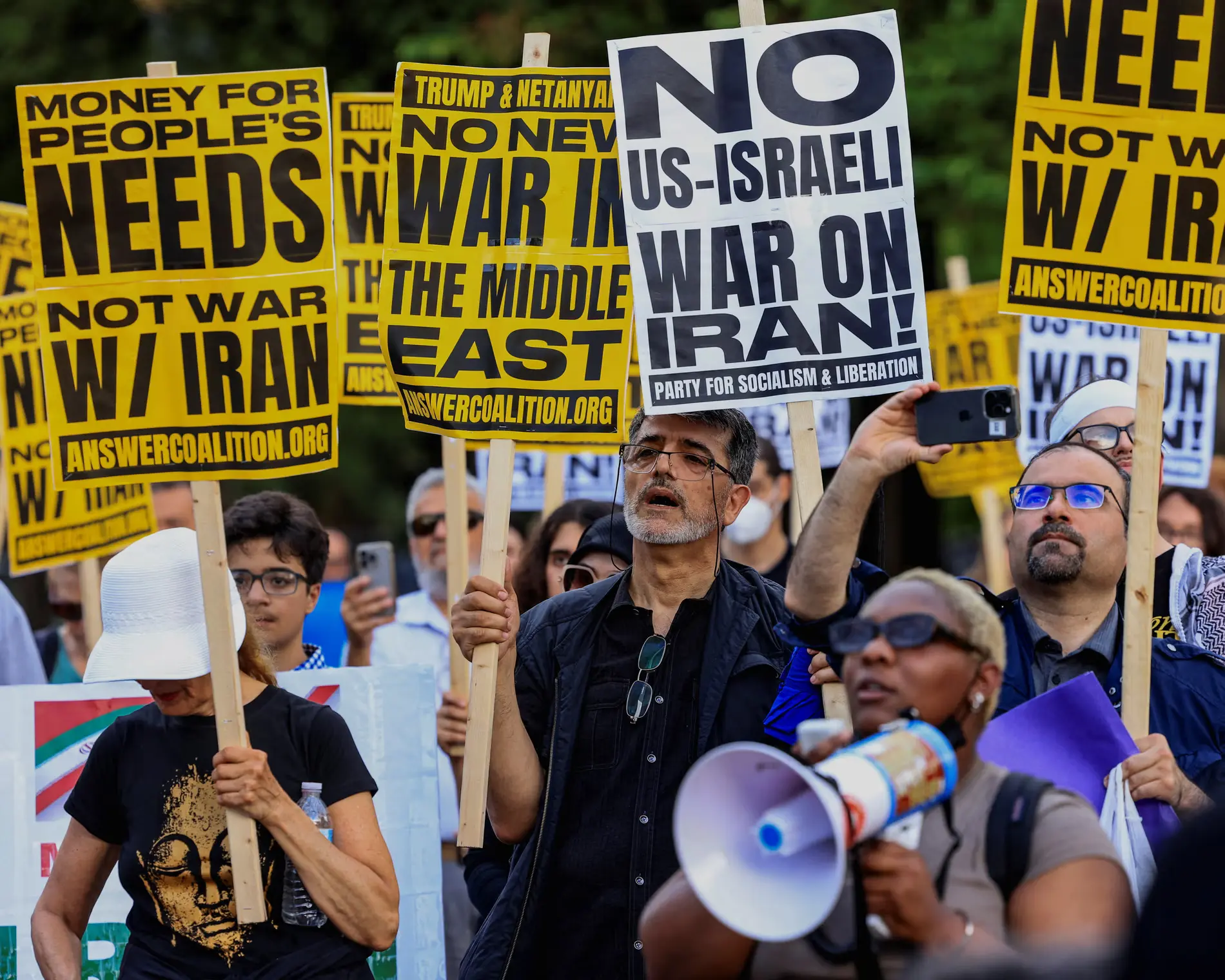President Trump delivers mixed signals on potential military action against Iran, deepening a divide within Washington. As tensions escalate in the Middle East, U.S. political and military leaders remain conflicted on whether to pursue diplomatic restraint or forceful retaliation.
Date: June 19, 2025
Category: Law, Global Politics, U.S. Foreign Policy
The geopolitical landscape shifted once again this week, as President Trump found himself at the center of growing tension between the United States and Iran. In a move that surprised some and puzzled many, the president sent mixed signals regarding whether the U.S. would pursue military intervention in Iran amid the nation’s escalating conflict with Israel. The ambiguity has left America, its allies, and even its top generals unsure of the administration’s direction.
🕊️ A President of Paradox: “I May, I May Not”
During a series of press briefings and social media posts, President Trump repeatedly refused to commit to a firm stance. He noted that the U.S. had “many options on the table,” but warned that any action would only follow “careful consideration.” He also stated, “I may do it, I may not do it,” a phrase that has since been replayed in headlines across the world.
Behind the scenes, intelligence sources confirmed that the White House had greenlit preliminary strike planning on several Iranian nuclear targets, including sites in Natanz and Arak. However, the final order remains unsigned, pending a presidential decision that could come within hours or days.
This deliberate delay, some analysts argue, is part of a larger strategy—projecting strength while allowing space for diplomatic maneuvering. Others suggest it is indecision, driven by the stark internal divide within the Republican base and the president’s inner circle.
⚖️ A Divided Administration and Fractured Base
The Republican Party appears sharply divided on whether to back military intervention. Trump’s national security advisors and Defense Department officials have reportedly pushed for a swift and limited strike, citing the increasing threat posed by Iran’s nuclear development. Meanwhile, populist conservatives, libertarian voices, and some members of Congress have urged restraint, warning that further escalation could lead to prolonged conflict in the Middle East.
Senior advisors like Pete Hegseth have reportedly lobbied in favor of “pre-emptive strength,” while voices like Tucker Carlson, Steve Bannon, and even Tulsi Gabbard have urged diplomacy and caution. This rare ideological rift within the MAGA base has complicated the president’s ability to act decisively, making any move politically risky.
🛡️ The Military Waits While the Middle East Burns
As of this morning, U.S. carrier strike groups and aerial refueling assets are repositioning near key conflict zones in the Persian Gulf. While no strikes have yet occurred, military leaders have confirmed that they are “ready to execute upon command.” Israel has already launched several attacks on Iranian weapons infrastructure, claiming that Iran’s backing of regional militia groups has pushed the situation beyond diplomacy.
In turn, Iran has vowed severe retaliation if the U.S. intervenes directly. State media from Tehran has characterized the U.S. buildup as “a hostile act” and warned that “any aggression will be met with regional fire.” Intelligence assessments indicate that Hezbollah, Houthis, and Shia militia groups in Iraq are now on heightened alert.
📉 Global Markets and Public Reactions
The indecision in Washington has had a noticeable impact on global markets. Crude oil prices spiked overnight, as traders anticipated potential disruptions to supply routes in the Strait of Hormuz. Defense sector stocks soared in pre-market trading, while tech and green energy stocks took a slight dip amid broader volatility.
Public response in the United States has also been mixed. National polls indicate that a slim majority of Americans oppose direct military action against Iran, preferring diplomatic efforts or limited economic sanctions. Meanwhile, supporters of the president have expressed confusion over the administration’s messaging, with some calling for clarity and others applauding the “strategic ambiguity.”
📜 Strategic Leverage or Presidential Wavering?
Political analysts remain divided over Trump’s intentions. Some suggest the president is using ambiguity as a tool of deterrence—sending a clear message to Iran without showing all his cards. Others worry that Trump’s hesitation reflects internal indecision rather than calculated diplomacy.
Critics have seized on the moment to question whether the president has a coherent strategy or is simply reacting to events in real-time. Legal scholars have begun debating whether a strike without Congressional approval could raise constitutional issues, especially if the intervention expands beyond a single action or provokes retaliatory attacks on U.S. assets.
🤝 Diplomatic Backchannels in Motion
Despite the threats and military readiness, there are signs of diplomatic efforts behind closed doors. European envoys are reportedly working to open emergency communication lines with Tehran. Some insiders say a possible third-party mediator—likely from Qatar or Oman—could soon attempt to broker de-escalation.
Trump has previously expressed openness to negotiations with Iran, stating that “they want a deal more than we do.” The president’s latest remarks, though ambiguous, continue to mention “an opening for resolution,” fueling speculation that Washington may be buying time to work out a diplomatic exit ramp.
🧩 Legal Complications and Congressional Noise
Meanwhile, lawmakers on Capitol Hill are preparing for a showdown. Democratic leaders have already signaled plans to invoke the War Powers Act should Trump act without explicit authorization. Some moderate Republicans are also pushing for a vote to clarify the administration’s legal authority.
This issue is now more than a military or foreign policy concern—it’s a legal and constitutional test. If the president chooses a unilateral path, it may trigger weeks of hearings, investigations, and possibly even lawsuits. The stakes are not just geopolitical, but also deeply legal and institutional.
🧠 Final Thoughts: A Moment of Global Reckoning
As the world watches, President Trump is standing on a geopolitical precipice. His decision will not just shape the trajectory of U.S.-Iran relations—it will redefine how the United States projects power, manages its alliances, and interprets its own constitutional constraints.
This moment demands more than bluster. It demands clarity, courage, and coherence. Whether Trump ultimately acts or abstains, the consequences will ripple through history. Markets will move. Alliances will shift. And America’s place in the world will be judged—not only by what it does, but by how clearly it chooses to do it.

















Comments 0